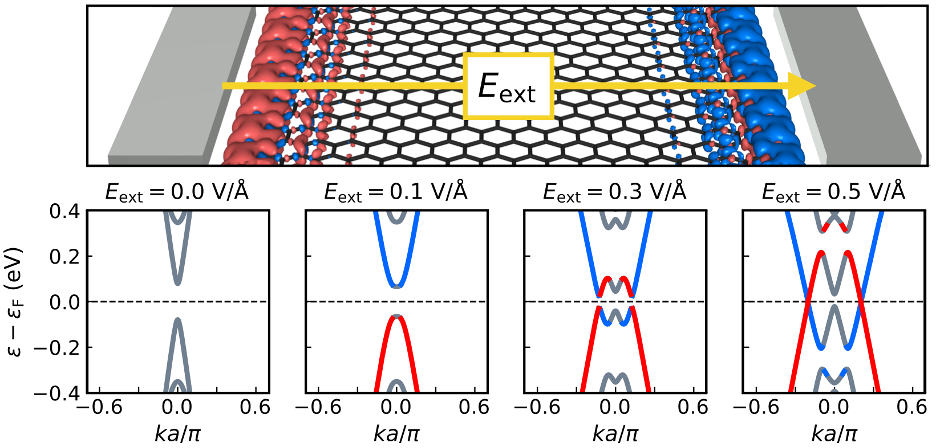Electrically Induced Dirac Fermions in Graphene Nanoribbons
https://pubs.acs.org/doi/pdf/10.1021/acs.nanolett.1c03596

Nano Letters 21, 9332 (2021)
Graphene nanoribbons (GNRs) are few-nanometer wide strips of hexagonally bonded carbon atoms. Unlike graphene, they have sizable band-gaps, while preserving high carrier mobility of graphene. This makes GNRs promising candidates for a post-silicon channels in nanoelectronics.
TYC researchers at Imperial College London, and researchers at Harvard University employed first-principles calculations and simple modelling to explore whether and to what degree the properties of graphene nanoribbons can be controlled through electrical stimuli. This is an issue of crucial importance to the development of GNR-based electronic devices. The authors demonstrate that transverse electric fields can be effectively used to modulate the magnitude of the band-gap, turning normally semiconducting GNRs into semimetals. The electrically-induced semimetallic phase features zero-energy massless Dirac fermions, analogously to two-dimensional graphene. The electric field can be applied externally, i.e., by contacting the edges of the nanoribbons to source and drain electrodes, or internally, by incorporating dopants of opposite polarities in the edges of the GNR. These findings are generalized to other group-IV nanoribbons, including recently fabricated silicene nanoribbons, which hold great promise due to their potentially easier integration into current silicon electronics. Overall, the results of this work pave the way to engineer Dirac fermions in the ultimate limit of scalability.
Link to the publication: https://pubs.acs.org/doi/pdf/10.1021/acs.nanolett.1c03596
Authors:
Michele Pizzochero (Harvard University), Nikita V. Tepliakov (Imperial College London), Arash A. Mostofi (Imperial College London), and Efthimios Kaxiras (Harvard University)
